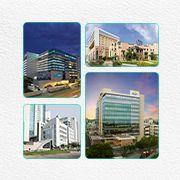Is 110/60 a Too Low Blood Pressure?
In This Article
Is 110/60 a Too Low Blood Pressure?
Rosmy
Updated on August 13, 2024
Medically verified by Dr. Arya
Fact checked by Sreemoyee

Wellness
10 minutes
This reading suggests that the heart is pumping efficiently and blood vessels are relaxed, reducing the risk of heart disease, stroke, and other cardiovascular conditions.
A normal blood pressure like 110/60 is a key indicator of overall well-being and a sign that the body is functioning properly.
Curious about whether this reading is too low blood pressure? Karetrip is here to help you understand it.
What is Blood Pressure?
Blood pressure is the force that moves blood through our circulatory system’s large arteries. Blood pressure is probably the most important vital sign and is measured in millimeters of mercury (mmHg).
Systolic and Diastolic pressure
A pair of figures is usually given for blood pressure measurements. The higher number represents systolic pressure, which is the arterial force when the heart contracts.
Diastolic pressure, on the other hand, means the lower figure and indicates blood pressure within the arteries during a heartbeat. For example, 120/80 mmHg means that systolic blood pressure equals 120 mmHg, while diastolic blood pressure is represented by 80 mmHg.
Healthy people, therefore, have no reason to have a low or high blood pressure since both hypotension and hypertension contribute to the development of several diseases.
On one hand, fainting and dizziness develop due to a lack of the required amount of oxygen that is pumped towards various organs, whereas kidney damage as well as stroke or cardiac disorders are caused by hypertension.
 10 mints
10 mintsVellore CMC: Pioneering Medical Tourism in South India
 10 min read
10 min readA Comprehensive Guide to Medical Tourism in Chennai: Top Hospitals and Treatments
 10 min read
10 min readShop Your Heart Out in Bangalore: Ultimate Shopping Guide!
Get a Callback Now
Factors of Hypertension and Hypotension
High blood pressure, known as hypertension and low blood pressure known as hypotension can be affected by different things, but these are among those that matter:
- Genetics: The family background can result in an increase in the risk.
- Age : Blood pressure normally goes up as people get older.
- Diet : Eating in large amounts all the time, salt, lipid, or cholesterol will bring out hypertension.
- Weight : The probability of being overweight or obese is higher.
- Physical Activity : Not taking up any physical activity eventually results in some probable high blood pressure.
- Alcohol: Overdosing the normal intake of alcohol can lead to higher blood pressure.
- Tobacco Use : Smoking or chewing tobacco increases blood pressure at the moment and is also frightful as it injures artery walls.
- Stress : Long-term stress may develop into hypertension due to the fact that it keeps the blood flowing through the body constantly.
- Chronic Conditions : Diseases that cause high blood pressure, such as kidney disease, diabetes, and sleep apnea, as well as gain in weight, are called risk factors, and they are the reason a person can have high blood pressure.
- Medications : All drugs that women use, birth control pills, cold remedies, and pain relievers, such as aspirin, can raise blood pressure because they take a long time in the body, and the person through them can try to get rid of them by losing them through the urine and the waste.
- Sleep Patterns : Tossing and turning or having a sleep disorder may make a person prone to having high blood pressure.
Knowing about and controlling these elements can be very beneficial in avoiding and managing them accordingly, with the aim of high blood pressure prevention!
Blood pressure plummets for many reasons. Germs, sepsis, pregnancy, drugs, bleeding, puking, diarrhea, severe allergies, and heart problems all play a role. But the biggest problem is dehydration.
Life's tough when your body runs dry. Maybe you skimp on fluids, or you're losing water fast through sweat, barf, or the runs.
Tons of stuff can tank your blood pressure. Doctors call rock-bottom blood pressure hypotension. It's not just one culprit that messes up your day; loads of things can throw your numbers out of whack. So here's the scoop: Keep tabs on your liquid intake, people!
Poor people are prone to blood pressure disorders. Because, in such cases, blood poisoning arises due to the systemic response in the body. This leads to a significant decrease in heart diagnosis.
Pregnancy brings on a loss of blood pressure as the flow of blood increases as a result of the system-wide connective system being enlarged.
Drugs like to lower the blood pressure. There are certain prescription drugs, such as agents with a high blood pressure condition, heart medications, antidepressants, and others, that can drop blood pressure.
Induced high temperature elevations are usually the effect of fever or the presence of high environmental temperatures, which in turn leads to hypotension in that the body lowers its blood vessels to cool off.
When a person bleeds, then they lose blood. This loss of blood can be because of an internal injury or bleeding. Blood volume gets reduced, and blood pressure can be raised because of it. What if and why do his fingers and hands get torn?
For most people, a blood pressure of 110/60 mmHg is not dangerous. Consistently, you may just be someone who aches in your back or has a few restless nights but has no side effects.
While a normal blood pressure value is 120/80 mmHg, all readings from 91 systolic BP to 119 diastolic BP are still fine. The same is true for diastolic blood pressure, which hovers from 61 to 79 mmHg.
Blood Pressure Categories
- Hypotension : less than 90 mmHg (systolic) and/or less than 60 mmHg (diastolic).
- Optimal : less than 120 mmHg (systolic) and less than 80 mmHg (diastolic).
- Normal : 120–129 mmHg (systolic) and 80–84 mmHg (diastolic).
- High Normal : 130-139 mmHg (systolic) or 85-89 mmHg (diastolic)
- Hypertension Stage 1 : 140–159 mmHg (systolic) or 90–99 mmHg (diastolic)
- Hypertension Stage 2 : 160–179 mmHg (systolic) or 100–109 mmHg (diastolic)
- Hypertension Stage 3 : 180 mmHg or higher (systolic) or 110 mmHg or higher (diastolic).
Always remember that these categories are not the only thing that tells you about your health; individual factors matter as your health can be different from that of another individual.
It's advisable to seek advice from a professional healthcare staff member for knowledgeable and suitable treatment for your problem.
Age, which equals the lessening of the heart's elastic boundary wall and an increase in low blood pressure, becomes inevitable as time passes.
Moreover, other risk factors responsible for the development of hypotension include extended bed rest, living a sedentary lifestyle, and the intake of certain medications employed for the cure of various maladies such as hypertension, heart issues, prostate problems, and even Parkinson's disease.
The above-mentioned factors can all intensify, and the chance of developing hypotension can grow. The right thing to do is to stress the significance of regular exercise, observing medication use, and checking blood pressure; that is how to live properly.
Blood pressure is the force that moves blood through our circulatory system’s large arteries.
Blood pressure measurements are usually given in numbers. The higher number represents systolic pressure and diastolic pressure, on the other hand, means the lower figure.
Hypotension and hypertension contribute to the development of several diseases and are caused by different factors.
blood pressure of 110/60 mmHg is considered as normal. There are different blood pressure categories.
Various factors can lead to hypotension and hypertension. Regular exercise, medication, checking blood pressure etc help us to regulate the condition.

